The Aunt
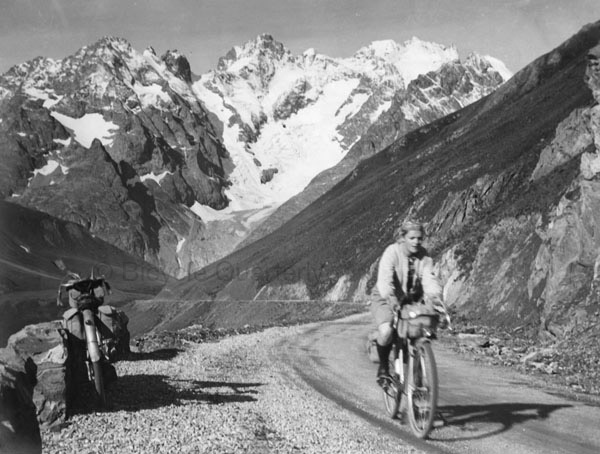
One of the best things of editing Bicycle Quarterly have been the wonderful people I have met all over the world. Even among these amazing people, Paulette Porthault stands out. Most of you have seen her many times: On the Bicycle Quarterly home page, you see her climbing the Galibier during the 1930s (see also above).
I heard about her from various French randonneurs. Did anybody know a rider who had participated in the Technical Trials? How was it to tour around Europe in the 1930s? What about cycling during the war? In every case, I was referred to “La Tante” (the aunt). The name was spoken with reverence, but also with a lot of fondness. La Tante was Lucien Détée’s aunt, who himself was one of the strongest randonneurs of the 1950s. (We featured the story of his tandem in Vol. 9, No. 4.) He introduced me to his then 90-year-old aunt, Madame Porthault, in 2004, and a wonderful friendship started.
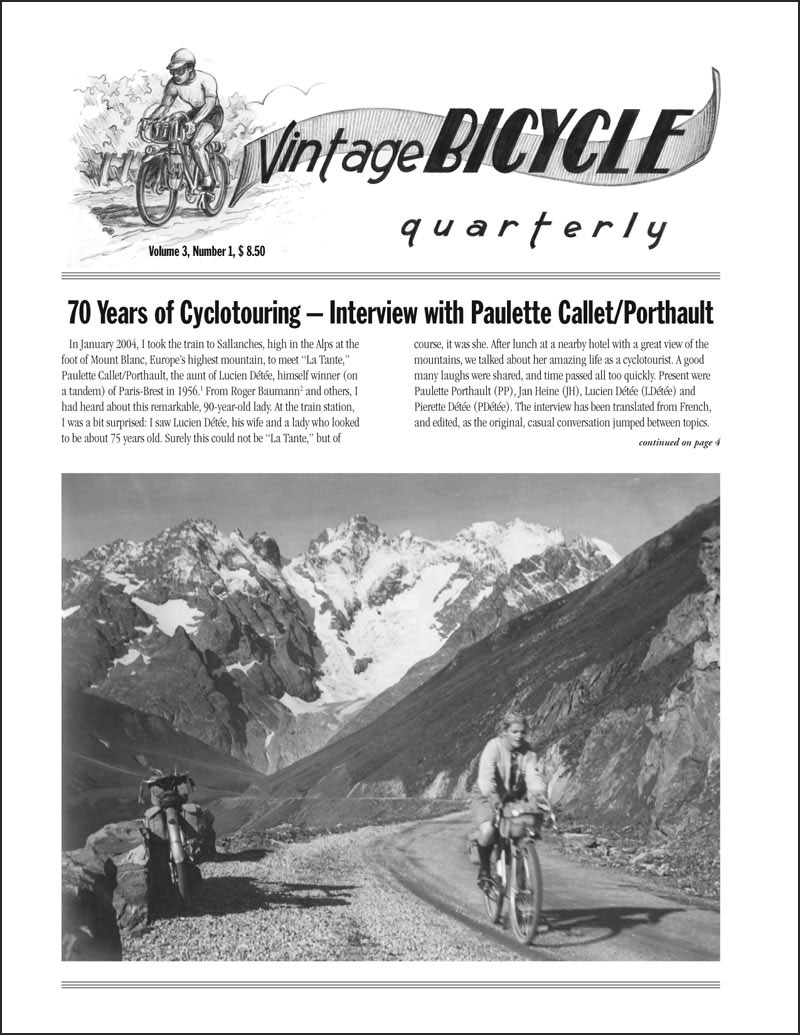
In Bicycle Quarterly Vol. 3, No. 1, we published an 11-page interview with La Tante. It’s still one of my favorites. As I wrote in the introduction: “A good many laughs were shared, and time passed all too quickly.” Madame Porthault told me how she went on her first cyclotouring ride in 1932 on a borrowed bike with indexing Le Chemineau derailleurs. To shift, you had to pull the lever outward and then move it to the next slot. This was so tricky that she swerved into her friends, and they all crashed to the ground!
Despite this inauspicious start, Madame Porthault rode with her friends whenever the opportunity arose. On holiday weekends, they took the night train on Friday evening to the Alps, then rode all weekend before returning by train on Sunday night. Arriving in Paris early on Monday morning, they rode straight from the train station to work, washed up in the bathroom, and were ready for work.
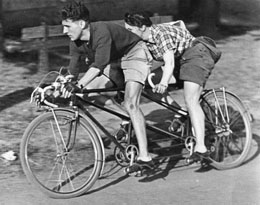
During the war, long tours were out of the question, so Madame Porthault became more involved in competition. With Jean Dejeans, one of the best riders from the Audax-Club Parisien, she won the tandem race of the Poly de Chanteloup (above). They also set a record in the 200 km brevet of 5:41 hours, which translates into an incredible 35.2 km/h (22.0 mph) average. And this on a course that was far from flat. Below, she is steadied by a young René Herse at the start of the 1943 Journée Vélocio hillclimb.
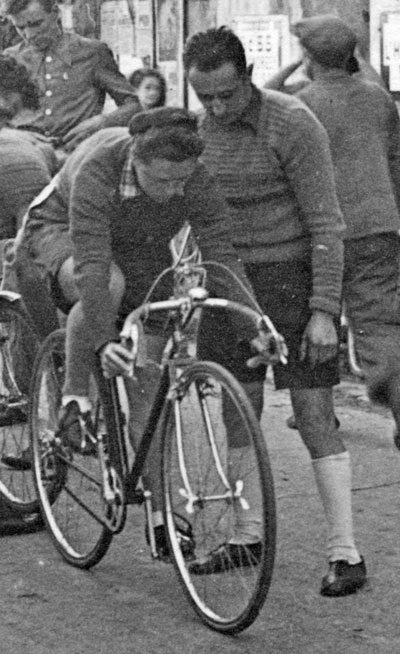
In 1942, she participated in the Criterium de Paris technical trials. She told me: “During the war, we did not get much vacation. When I asked my employers for time off so I could ride in a bicycle event, they were a bit surprised, but gave me the vacation anyhow.”
After the war, she continued to ride in events for René Herse, including the 1946 Technical Trials in Colmar: “We had saddles […] like pieces of wood. Sure, they were light. I don’t know what they used instead of leather, but they were abominable.” She was still smiling, though (below)!
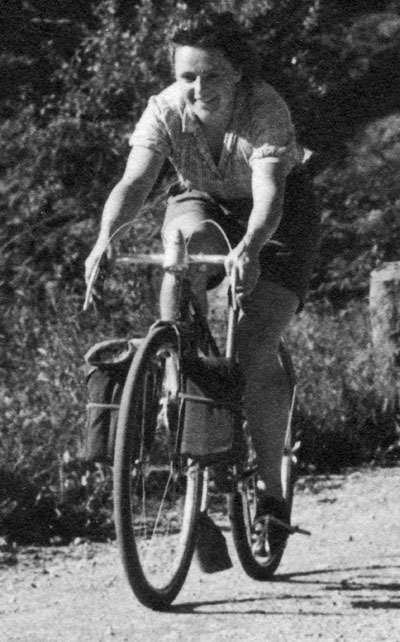
She resumed touring abroad, all the way to Yugoslavia and beyond. Currency restrictions meant that money had to be smuggled across the borders. Madame Porthault recalled: “We rode across the border with the money in our tires. Then we looked for a secluded spot, where we took off our tires and recovered the money. But you had to be careful and wrap the bills in cotton. One of our friends, who wasn’t too mechanically inclined, simply stuffed them in there. They were completely shredded when he wanted to retrieve them…”
In 1947, she was part of the team that originated the Flèche Vélocio (below). She wrote a great report, which we translated and published alongside her interview in Bicycle Quarterly Vol. 3, No. 1. She was planning to ride in the first post-war PBP when she became pregnant with her son. Her husband, Charles Porthault, was also one of the “grands randonneurs” of the time. He is shown in the center of the photo below, at the start of that inaugural Flèche in front of Notre Dame in Paris. (Jean Dejeans is on the left, Alfred Gadeceau on the right.) These are but a few of the many stories and photos she shared in the Bicycle Quarterly interview.
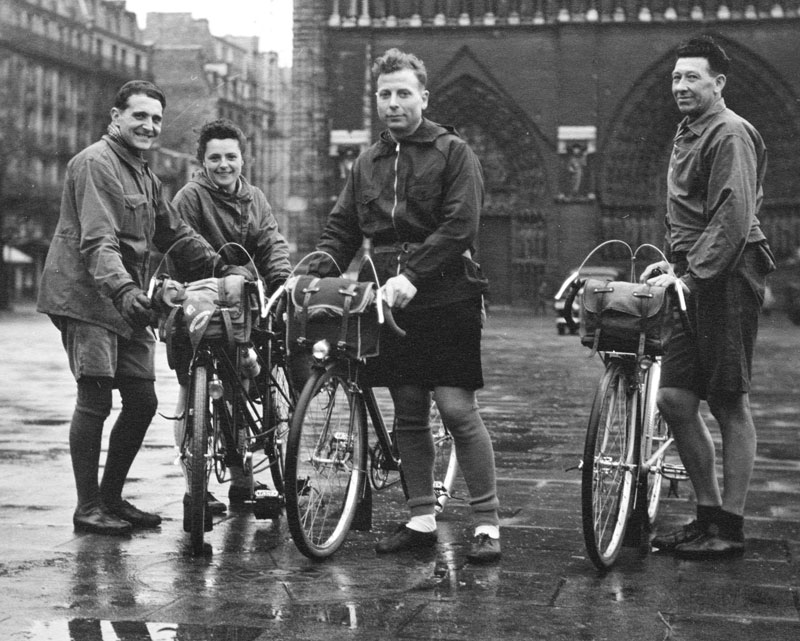
It was greatly concerned when I learned two years later that Madame Porthault had fallen and broken her hip. However, when I called her, she was in good spirits. “Later in life, I will look back on this time as a difficult period,” she told me. She was 92 at the time.
Her optimism was well-founded. Five years later, she is as healthy as always. I last saw her two years ago, when she picked me up from the train station. We had lunch at a restaurant, then went to her apartment. She walked the stairs with ease and even went into the basement to rummage for some old photos. Her memory is as sharp as ever, and I look forward to visiting her this summer after riding in Paris-Brest-Paris to celebrate her 98th birthday.
For more information or to order this classic back issue of Bicycle Quarterly (while supplies last), click here. I am sure that you’ll enjoy the adventures of La Tante as much as I did.


